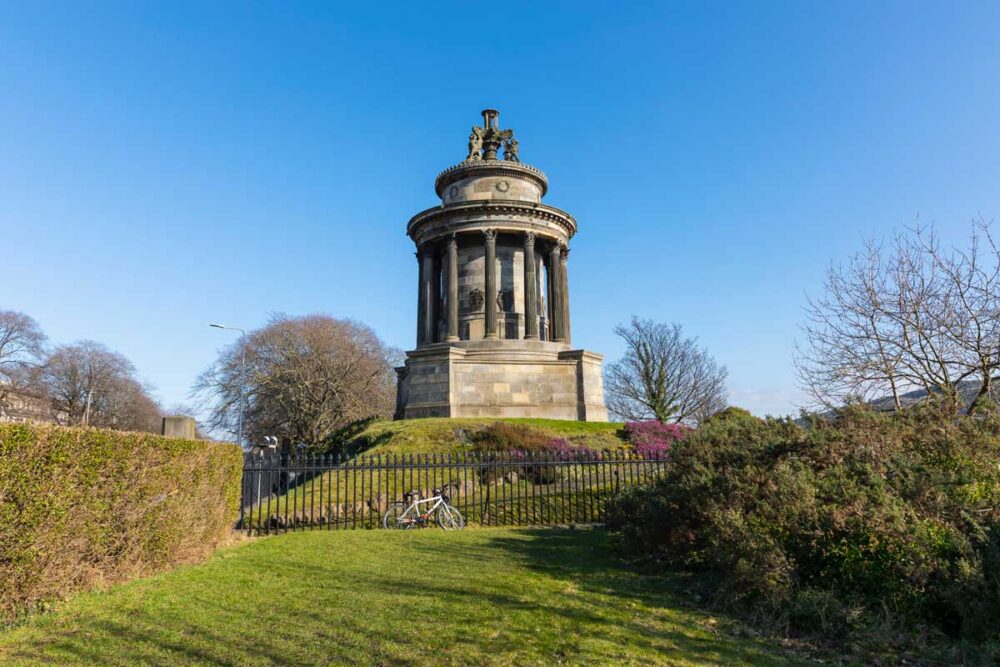
This short blog post says a little about Robert Burns and his connections with Edinburgh and the Scottish Borders.
As Scotland emerged from the turmoil of the 17th century and, in the following century, ceased to exist as an independent nation, a remarkable phenomenon began to develop.
Scottish Enlightenment
Within a few short decades, a group of men destined to create a reputation for excellence in the fields of literature, poetry, philosophy, science, economics and political thinking emerged in a golden age of Scottish history.
Robert Burns, early life
Among these men destined to play their part in what became the Scottish Enlightenment was Robert (Rabbie) Burns, the eldest son of Ayrshire tenant farmers.
He was born on 25 January 1759 in a simple whitewashed two-roomed cottage In Alloway.
Robert Burns became a radical, a Jacobite and ultimately a literary hero.
Sir William Wallace
As a young boy, Robert attended the local school where he was introduced to poetry and prose. One of the first books that he read was to have a profound effect on him, it was the history of Sir William Wallace.
He said proudly, “The story of Wallace poured a Scottish prejudice into my veins which will boil along there till the flood-gate of life shuts in eternal rest.”
As he grew, his back-breaking labour in the fields gave him an insight into the problems faced by the peasantry who, despite the Union with England and the promise of better times remained largely poor and backward.
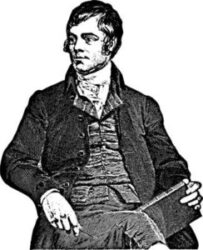
He became a Jacobite at heart not because he wanted the restoration of an absolute monarchy but seeing it as a movement that fought for Scottish independence.
Kilmarnock edition of poetry
In July 1786, with the publication (by John Wilson of Kilmarnock) of Poems, Chiefly in the Scottish Dialect (Kilmarnock edition), Burns was transformed from a local poet to a national bard.
It was a completely new book of verse and included To a Daisy, To a Mouse and the Cottars Saturday Night.
At one point Burns considered using the proceeds from the book to finance a trip to Jamaica.
Robert Burns Edinburgh and the Scottish Borders
His success prompted him instead to visit Edinburgh, a place he returned to frequently over the next year or so.
Robert Burns and Sir Walter Scott
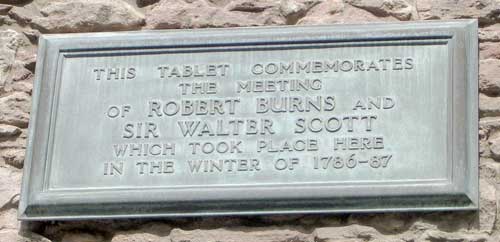
To the ‘literati’ of Edinburgh, he was a sensation.
Even the 15-years-old, Walter Scott considered it a great honour when they met at Sciennes House, the home of philosopher Professor Adam Ferguson during one of his ‘literary dinners in the winter of 1786-87.
A plaque placed on what now remains of the original house commemorates the meeting.
Robert Burns and Robert Fergusson
A fellow poet, Robert Fergusson had a substantial influence on Burns who was appalled to find him, “subject to furious insanity” in the Edinburgh City Bedlam which later became the Royal Edinburgh Hospital.
Fergusson died in 1774 and was buried in an unmarked grave in the Canongate Kirkyard on the lower end of the Royal Mile.
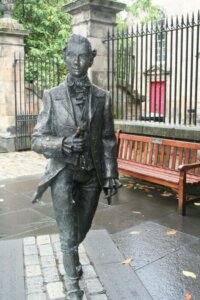
Some years later Robert Burns paid for a memorial stone to be erected.
In Edinburgh, Burns lived first in Baxter’s Close (no longer there) on the Lawnmarket, today part of the Royal Mile.
William Creech
In 1787, William Creech, an Edinburgh publisher, bookseller, magistrate and more published the first Edinburgh edition of Burn’s poetry.
Burns and Creech who had a bookshop, a luckenbooth, near St Giles’ Cathedral initially worked amicably together. But the notoriously tight-fisted Creech was often late with payment to Burns and the relationship soured.
Burns also met William Smellie, a business associate of Creech who printed the second Edinburgh edition of his poetry.
Encyclopaedia Britannica
It was Smellie, editor of the first edition of the Encyclopaedia Britannica, who introduced Burns, at some point in 1787 to an Edinburgh drinking club that took the name the Crochallan Fencibles
Members met in a tavern, a convivial club apparently, in Anchor Close, off the High Street on the Royal Mile.
It was an important period in his life for 1787 was also the year when Burns worked with Edinburgh music publisher James Johnson to bring together the words and music of all Scottish songs.
The project was a roaring success ultimately running to six volumes of 100 songs in each volume.
Writers’ Museum Edinburgh
Edinburgh’s Writer’s Museum on the Royal Mile honours the lives of three of the greatest Scottish writers – Robert Burns, Sir Walter Scott and Robert Louis Stevenson.
Burns from Edinburgh to the Scottish Borders
In a letter to a friend, he said, “I have no greater, no dearer aim than to have it in my power…to make leisurely pilgrimages through Caledonia…”
The Borders tour began in Edinburgh on 5 May 1787 and with his companion Robert Ainslie he travelled south by way of Haddington and Longformacus.
Burns kept an account of his journey which was first published in 1834. It was written in annotated form but nevertheless gives us an insight into his thoughts as he passed through the Borders.
His first night was spent at Berrywell near Duns, the home of his friend and travelling companion.
The following day was Sunday and he accompanied the family to church where the minister was preaching a fire and brimstone service denouncing obstinate sinners.
However, Burns had his mind on other things. He found himself attracted to Ainslie’s sister and quickly wrote a few lines and passed them to her.
“Fair maid, you need not take the hint, Nor idle tests pursue; ‘Twas only sinners that he meant, Not angels such as you.”
Robert Burns
Continuing their journey they arrived in Coldstream before crossing the Tweed and setting foot on English soil for the first time. He noted that the river was, “clear and majestic.”
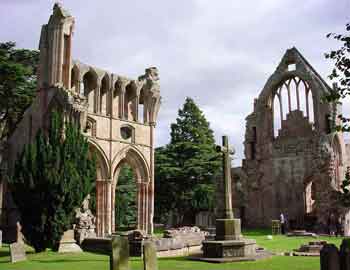
The next stop was Kelso and then on to the ruins of Roxburgh Castle and to the spot where King James II was killed during the bloody carnage that was Flodden Field.
“Charming and romantic” was his view of Jedburgh his next stop on the tour. A town of “rude grandeur” noted Burns as he took in the sights.
He continued by way of Melrose, Dryburgh and old Ercildoune the ancient home of Thomas the Rymer, and as ever susceptible to the charms of the local girls.
Burns was later to embark on two Highland tours before returning to Alloway to marry his beloved Jean Armour.
Burns last visit to Edinburgh
Robert Burns was back in Edinburgh in 1791, staying on this occasion at the White Hart in the Grassmarket.
A brass plaque outside this pub says: “In the White Hart Inn Robert Burns stayed during his last visit to Edinburgh, 1791.”
The life of Scotland’s greatest poet was dogged with controversy. However, his many affairs, illegitimate children, his drinking, bawdy language and his flirtation with the ideals of the French Revolution were all ultimately forgiven.
Robert Burns died at the age of 37, in July 1796.
More information
The National Trust for Scotland (NTS) manages the Robert Burns Birthplace Museum in Alloway Ayrshire. Visit the official NTS website for more information